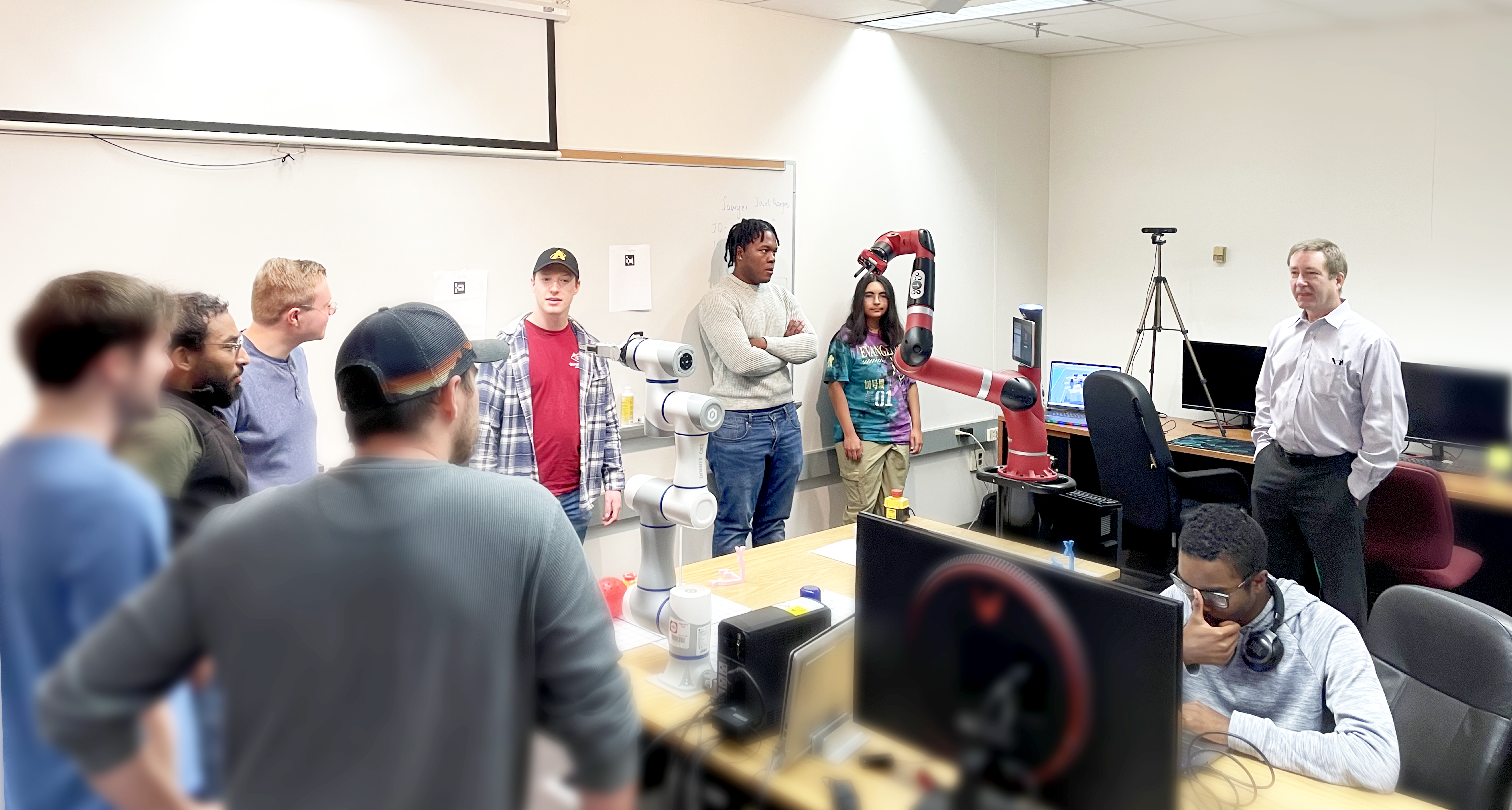STEM
Powering the Future of Innovation

What Can You Do with VxSIM?
VxSIM is a state-of-the-art simulation platform that brings science, technology, engineering, and mathematics (STEM) concepts to life. Designed for students, educators, and researchers, VxSIM enables users to experiment, test, and analyze AI-driven robotics, autonomous systems, and real-world physics in a virtual environment.
AI & Robotics Simulation
Stereo Camera, LiDAR and Scene Viewer Integration
Watch as a Stereo Camera detects a person moving around a room, lower right. The data is then visualized in real-time inside the VxSIM scene viewer, accurately mapping the environment. A LiDAR sensor simulation detects the tracked person (bounding box) and streams the point cloud to the Velo View app, demonstrating the real to fused virtual and back to real world.
Robot Room Navigation with VxSIM Scene Viewer
A robot autonomously navigates through a room while the VxSIM scene viewer updates in real time, showing the robot’s position in a virtual replica of the space. While the box is not represented in the virtual replica, the LiDAR sensor on the robot detects the box, inserting it into the virtual environment. Later in the scene, the robot steers around a virtual box that is not in the real world, thus blending both the virtual and real environments from the robot’s perspective.
Design & Test AI Systems
Simulate and test multiple AI agents working collaboratively or independently in complex, dynamic environments. VxSIM helps you model decision-making, communication, and adaptive behaviors across a variety of simulated scenarios.
In a 90-hour, semester-long STEM internship, four high school students from Carroll County, MD learned about robotics, network communications, computer vision, and programming with python all while developing a fun and challenging game leveraging VxSIM’s capabilities. Watch RosBot in action as it navigates through the color obstacle game, showcasing the team’s accomplishments with developing their newly-learned skills.
Physics-Based Simulations
Real & Simulated Ocean Interactions
A real vehicle drives into a wave pool at the University of Iowa’s Marine Science and Technology Lab, interacting with the water’s natural dynamics, while a simulated vehicle in VxSIM drives into a digital twin of the wave pool, demonstrating precise water physics and hydrodynamics simulation. More images of the lab can be found here: https://mast.lab.uiowa.edu/gallery
Simulating Waves in a Beach Terrain
Preview dynamic ocean wave simulations in VxSIM’s beach terrain, showcasing realistic water physics for costal engineering and environmental modeling.
Engineering & Transportation Simulations
Train Automation and Stop Detection
As a student’s final project in a UMBC Modeling and Simulation for Robotics course, a fully automated train simulation was developed using VxSIM. The train moves in a circular loop, detects its designated stop, pauses for 5 seconds, and continues moving.
Driving a VxSIM-based vehicle in Unity
A vehicle simulation created in VxSIM is seamlessly integrated into a Unity visualization, providing a synchronized virtual representation of the environment, with high-resolution, realistic scenery.
Space & Autonomous Exploration: Explore Realistic Physics
Harness high-fidelity physics-based models to simulate real-world systems accurately. Whether you’re exploring mechanical engineering, fluid dynamics, or gravitational effects, VxSIM’s advanced algorithms ensure realistic, reliable simulations.
As a student’s final project in a UMBC Modeling and Simulation for Robotics, a Mars rover landing in a realistic Martian terrain analyzed landing and navigation algorithms in VxSIM to ensure accurate terrain interaction and trajectory prediction.
Robotic Arms in Research & Education
UMBC Robotics Lab Digital Twin
This is a digital twin of the robotics lab at University of Maryland, Baltimore County. It is being used to support robotic arms (cobots) controls research and engineering education. More details can be found here: https://tsehuaiwu.umbc.edu/
